
Brick Model of the Month: The fascinating story of the Horten Ho 229
Hello and welcome to this week's blog which puts the mysterious Horten Ho 229 in the spotlight as April's 'Brick Model of the Month'.
Take a deep dive into the fascinating story behind this unprecedented WWII aircraft, of which COBI has produced a fantastic 953 piece model. Or if you are short on time, you can scroll to the bottom of the article and read a summary of the top ten facts - enjoy!
Have a good weekend.
Warmest wishes,
Zoë
P.S. Don't miss Mark C.'s top tip for how to add a stand to the COBI model at the very end.
Take a deep dive into the fascinating story behind this unprecedented WWII aircraft, of which COBI has produced a fantastic 953 piece model. Or if you are short on time, you can scroll to the bottom of the article and read a summary of the top ten facts - enjoy!
Have a good weekend.
Warmest wishes,
Zoë
P.S. Don't miss Mark C.'s top tip for how to add a stand to the COBI model at the very end.
The Fascinating Story of the German Experimental Jet Aircraft of WWII
Amidst the tumult of WWII, a revolutionary aircraft emerged, poised to redefine the boundaries of aerial warfare. The Horten Ho 229, also recognised as the Gotha Go 229, epitomised the pinnacle of German engineering prowess. Classified as a Wunderwaffe, or Wonder Weapon, its significance transcended mere technological innovation; it represented a beacon of hope for a nation embroiled in conflict.
Few aircraft in the history of aviation evoke as much intrigue and fascination as the Horten Ho 229. This experimental jet-powered aircraft symbolises the audacity of its creators and the ambition of a nation striving for supremacy in the skies. The Wunderwaffe was envisioned as a game-changer that could tip the scales of war in Germany's favour.
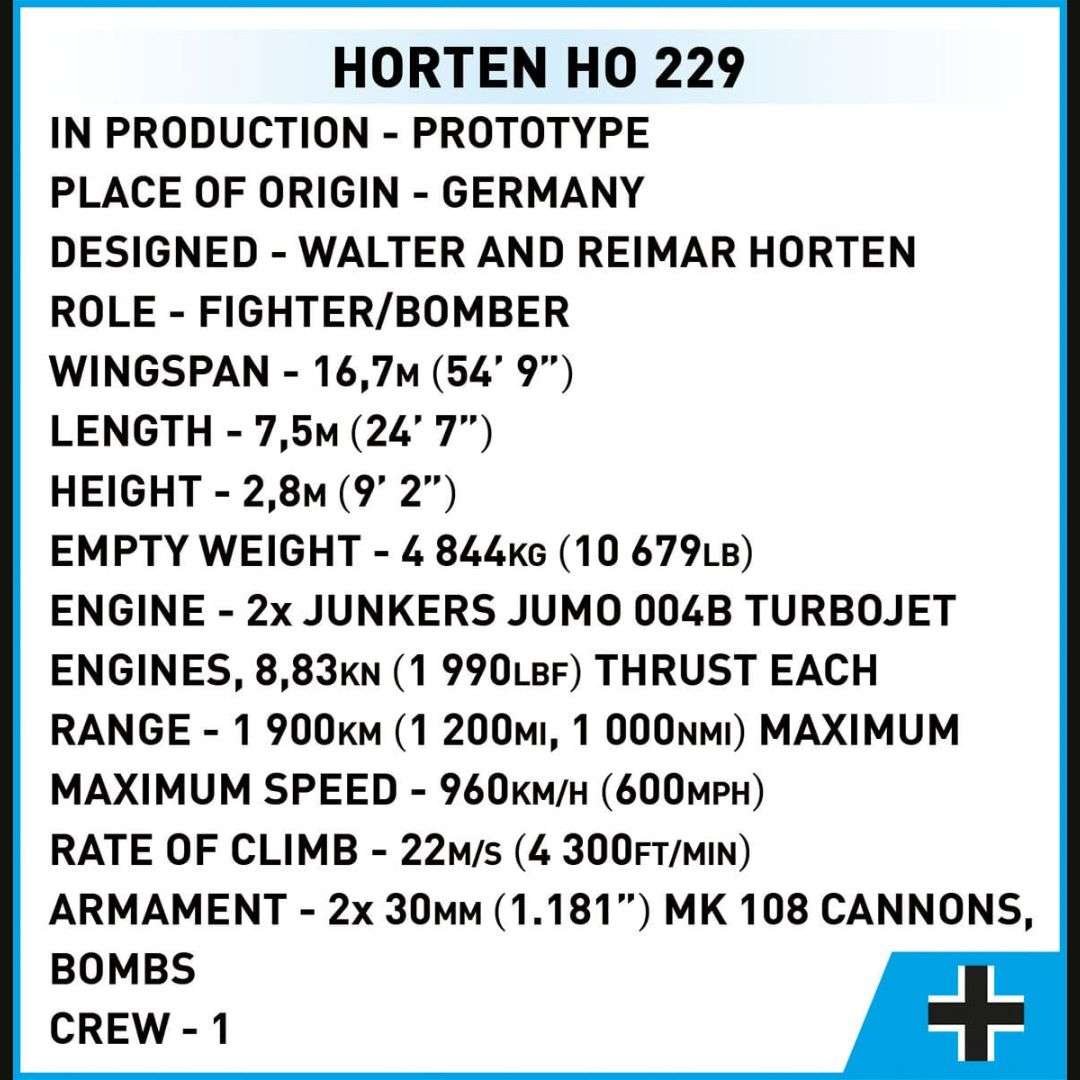
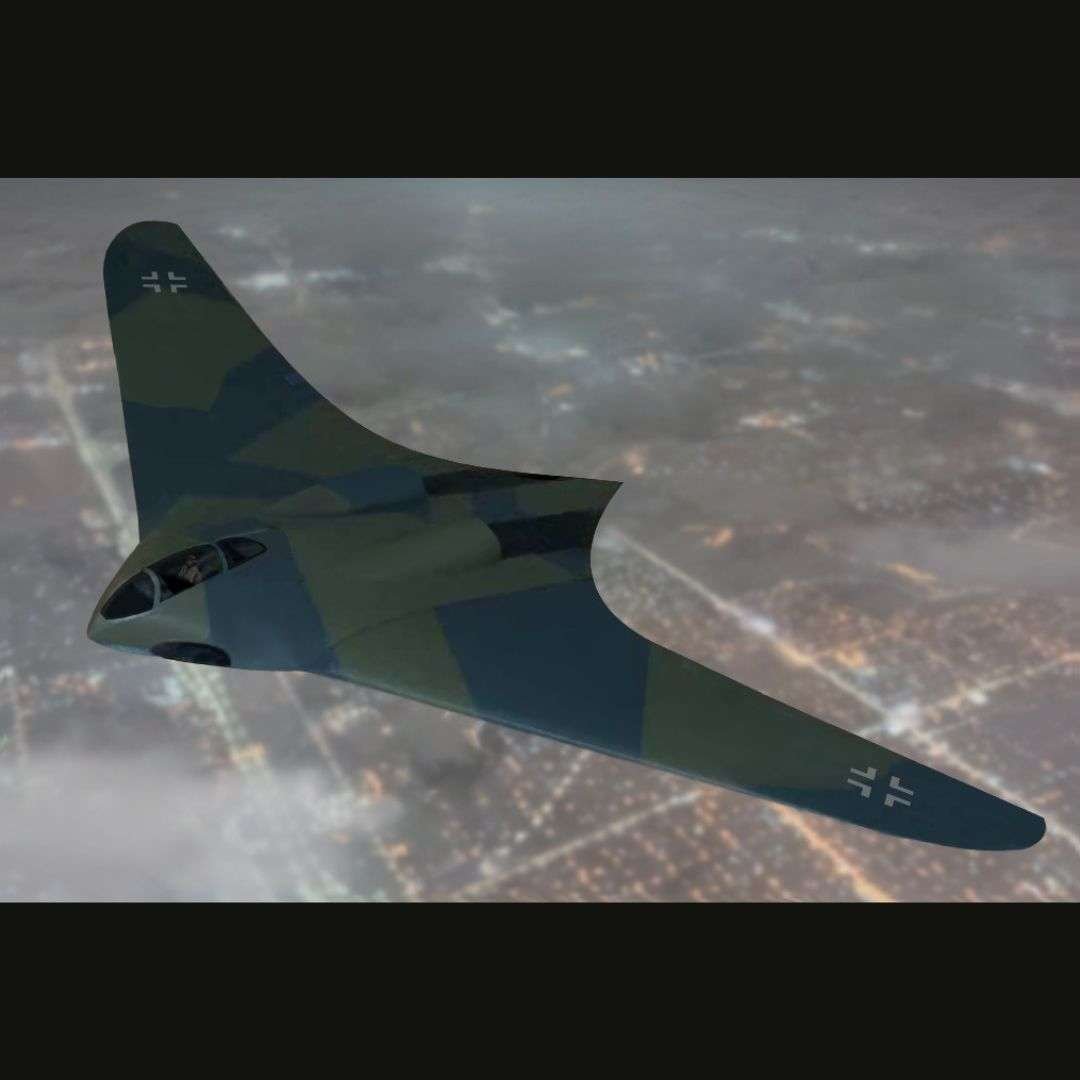
Pictured above: Artist's concept of the aircraft in flight by FOX 52 - Own work
Origins and Purpose
The concept of the Horten Ho 229 can be traced back to the visionary minds of the Horten brothers, Walter and Reimar. Despite lacking formal engineering credentials, their passion for aviation drove them to pursue unconventional design concepts. Against the backdrop of Germany's escalating aviation needs during WWII, the Ho 229 emerged as a response to the Luftwaffe's quest for an America bomber, intended to strike targets across the Atlantic.
Its flying wing design, chosen for aerodynamic efficiency, lacked flight control surfaces to minimise drag, reaching a ceiling of 15,000 metres. The first prototype, an unpowered glider, flew in March 1944, followed by a powered version in December 1944. Despite production orders for 100 aircraft, none were completed. The nearly finished V3 prototype was taken by the US military under Operation Paperclip and is displayed at the Smithsonian National Air and Space Museum.
The concept of the Horten Ho 229 can be traced back to the visionary minds of the Horten brothers, Walter and Reimar. Despite lacking formal engineering credentials, their passion for aviation drove them to pursue unconventional design concepts. Against the backdrop of Germany's escalating aviation needs during WWII, the Ho 229 emerged as a response to the Luftwaffe's quest for an America bomber, intended to strike targets across the Atlantic.
Its flying wing design, chosen for aerodynamic efficiency, lacked flight control surfaces to minimise drag, reaching a ceiling of 15,000 metres. The first prototype, an unpowered glider, flew in March 1944, followed by a powered version in December 1944. Despite production orders for 100 aircraft, none were completed. The nearly finished V3 prototype was taken by the US military under Operation Paperclip and is displayed at the Smithsonian National Air and Space Museum.
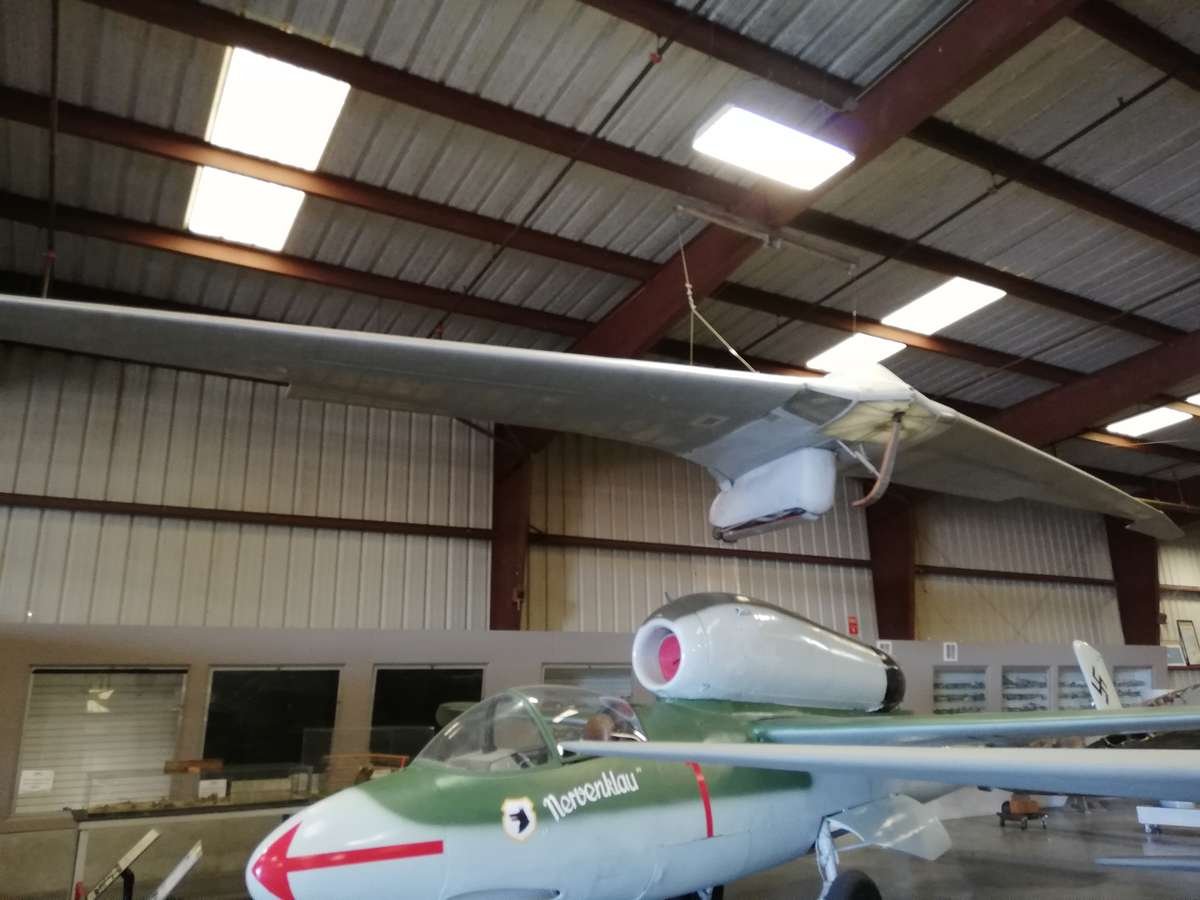
Pictured above: Horton IV glider (hanging) by 先従隗始, CC0, via Wikimedia Commons
Innovation in Design
In the early 1930s, the Horten brothers were working on the flying wing configuration as a way of improving the performance of gliders. At that time, the German government was funding glider clubs across the country as a response to the production of military and even motorised aircraft being forbidden by the Treaty of Versailles. The flying wing layout theoretically offered the lowest possible weight, and without the added drag of the fuselage. Their initial aircraft using this configuration was the Horten H.IV.
The Horten H.IX, also known as Ho 229 (or Gotha Go 229 for Gotha's
redesign), was a German jet-powered prototype, aiming to meet Hermann Göring's 1943 call for light bombers with the "3×1000 requirement", namely, to carry 1,000 kilograms of bombs a distance of 1,000 kilometres with a speed of 1,000 kilometres per hour.
Although conventional German bombers were capable of reaching Allied targets, they faced heavy losses from Allied fighters over Great Britain. While new Junkers Jumo 004B turbojets offered the required speed, they consumed too much fuel. However, the Horten brothers proposed the H.IX flying wing design with reduced drag was the answer: it would meet the range and speed requirements thanks to needing lower cruise power.
The Government Air Ministry approved the Horten proposal, adding two 30mm cannons so it could also be used as a fighter due to its superior top speed over any Allied aircraft. Göring supported the project, ordering three prototypes. Initially, 100 production aircraft were ordered, but later reduced to 20.
As the Horten brothers lacked appropriate production facilities, manufacturing of the aircraft was carried out by an established company, Gothaer Waggonfabrik.
The H.IX had mixed construction, with a steel centre pod and pine wing spars. Its wings consisted of thin plywood panels glued with a charcoal-sawdust mixture and coated with fireproof paint. Limited interior space made adding new equipment or crew members challenging.
The aircraft had retractable tricycle landing gear, with nose gear sourced from a He 177 on the first two prototypes and an He 177A main gear wheel on the third. It used a drogue parachute for landing, and the pilot sat on a basic ejection seat. A specially designed pressure suit by Dräger was also used. Originally planned with a BMW 003 engine, it was equipped with a Junkers Jumo 004. Flight control was achieved using elevons and spoilers, with both long-span and short-span spoilers for yaw control.
The Horten H.IX, also known as Ho 229 (or Gotha Go 229 for Gotha's
redesign), was a German jet-powered prototype, aiming to meet Hermann Göring's 1943 call for light bombers with the "3×1000 requirement", namely, to carry 1,000 kilograms of bombs a distance of 1,000 kilometres with a speed of 1,000 kilometres per hour.
Although conventional German bombers were capable of reaching Allied targets, they faced heavy losses from Allied fighters over Great Britain. While new Junkers Jumo 004B turbojets offered the required speed, they consumed too much fuel. However, the Horten brothers proposed the H.IX flying wing design with reduced drag was the answer: it would meet the range and speed requirements thanks to needing lower cruise power.
The Government Air Ministry approved the Horten proposal, adding two 30mm cannons so it could also be used as a fighter due to its superior top speed over any Allied aircraft. Göring supported the project, ordering three prototypes. Initially, 100 production aircraft were ordered, but later reduced to 20.
As the Horten brothers lacked appropriate production facilities, manufacturing of the aircraft was carried out by an established company, Gothaer Waggonfabrik.
The H.IX had mixed construction, with a steel centre pod and pine wing spars. Its wings consisted of thin plywood panels glued with a charcoal-sawdust mixture and coated with fireproof paint. Limited interior space made adding new equipment or crew members challenging.
The aircraft had retractable tricycle landing gear, with nose gear sourced from a He 177 on the first two prototypes and an He 177A main gear wheel on the third. It used a drogue parachute for landing, and the pilot sat on a basic ejection seat. A specially designed pressure suit by Dräger was also used. Originally planned with a BMW 003 engine, it was equipped with a Junkers Jumo 004. Flight control was achieved using elevons and spoilers, with both long-span and short-span spoilers for yaw control.
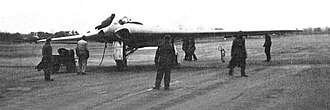
Pictured above: The Horten H.IX V2 before a test flight by 先従隗始 - Own work
Development and Testing
On March 1, 1944, H.IX V1, an unpowered glider with fixed tricycle landing gear, made its first flight. Despite favourable results, an accident occurred due to an extended instrument pole during landing. Responsibility shifted to Gothaer Waggonfabrik, leading to several modifications including an ejection seat, redesigned undercarriage, and engine inlets.
Tragically, during a test flight of H.IX V2 on February 18, 1945, an engine fire led to a fatal crash, halting the project temporarily. However, by March 12, 1945, the Ho 229 was included in the Emergency Fighter Programme, with production accelerated. The third prototype, Ho 229 V3, was underway, intended for mass production as a day fighter.
However, in April 1945, Patton's Third Army discovered four Horten prototypes,
including the Ho 229 V3. The V3, closest to completion, was sent to the US for assessment. En route, it briefly stopped at RAE Farnborough, where the feasibility of installing British jet engines was explored but deemed incompatible due to different engine designs. Whether the original engines were tested remains uncertain, though there was intent from the American evaluation team to fly it.
On March 1, 1944, H.IX V1, an unpowered glider with fixed tricycle landing gear, made its first flight. Despite favourable results, an accident occurred due to an extended instrument pole during landing. Responsibility shifted to Gothaer Waggonfabrik, leading to several modifications including an ejection seat, redesigned undercarriage, and engine inlets.
Tragically, during a test flight of H.IX V2 on February 18, 1945, an engine fire led to a fatal crash, halting the project temporarily. However, by March 12, 1945, the Ho 229 was included in the Emergency Fighter Programme, with production accelerated. The third prototype, Ho 229 V3, was underway, intended for mass production as a day fighter.
However, in April 1945, Patton's Third Army discovered four Horten prototypes,
including the Ho 229 V3. The V3, closest to completion, was sent to the US for assessment. En route, it briefly stopped at RAE Farnborough, where the feasibility of installing British jet engines was explored but deemed incompatible due to different engine designs. Whether the original engines were tested remains uncertain, though there was intent from the American evaluation team to fly it.
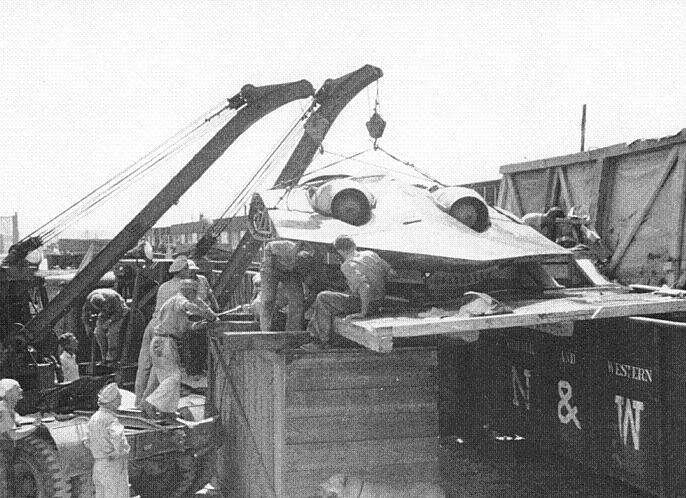
Pictured: Unloading of the captured Horten Ho 229 V3 in the United States by US Government employee.
Speculation and Mythology
The Ho 229's purported stealth capabilities added to its mystique, earning it the moniker of the first stealth aircraft in history. While research confirmed a reduction in radar reflection, it fell short of rendering the aircraft completely undetectable. Nonetheless, the Ho 229's design laid the groundwork for future advancements in stealth technology.
The story of the Horten Ho 229 has become shrouded in speculation and mythology over the years. Rumours abound regarding its combat effectiveness and clandestine missions, perpetuating its mystique. In popular culture, it has been immortalised as a symbol of German technological prowess and wartime intrigue, further adding to its enigmatic allure.
Influence on Post-War Aviation
Despite its wartime demise, the legacy of the Horten Ho 229 endured in the realm of post-war aviation. Its innovative design and technological advancements left an indelible mark on the development of jet aircraft in Europe and America. The Ho 229's influence permeated through the corridors of aerospace engineering, shaping the trajectory of aviation innovation for years to come.
The story of the Horten Ho 229 has become shrouded in speculation and mythology over the years. Rumours abound regarding its combat effectiveness and clandestine missions, perpetuating its mystique. In popular culture, it has been immortalised as a symbol of German technological prowess and wartime intrigue, further adding to its enigmatic allure.
Influence on Post-War Aviation
Despite its wartime demise, the legacy of the Horten Ho 229 endured in the realm of post-war aviation. Its innovative design and technological advancements left an indelible mark on the development of jet aircraft in Europe and America. The Ho 229's influence permeated through the corridors of aerospace engineering, shaping the trajectory of aviation innovation for years to come.
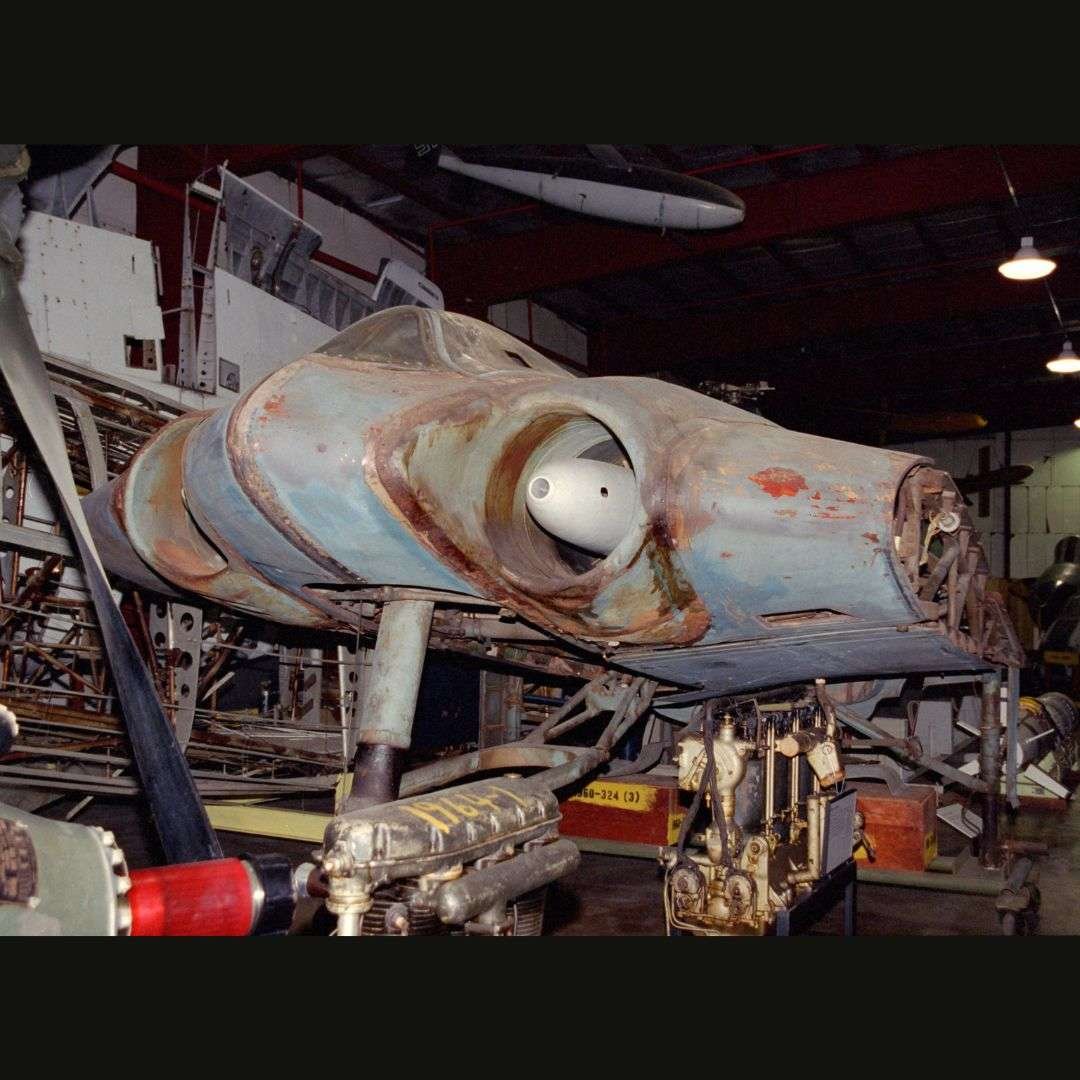
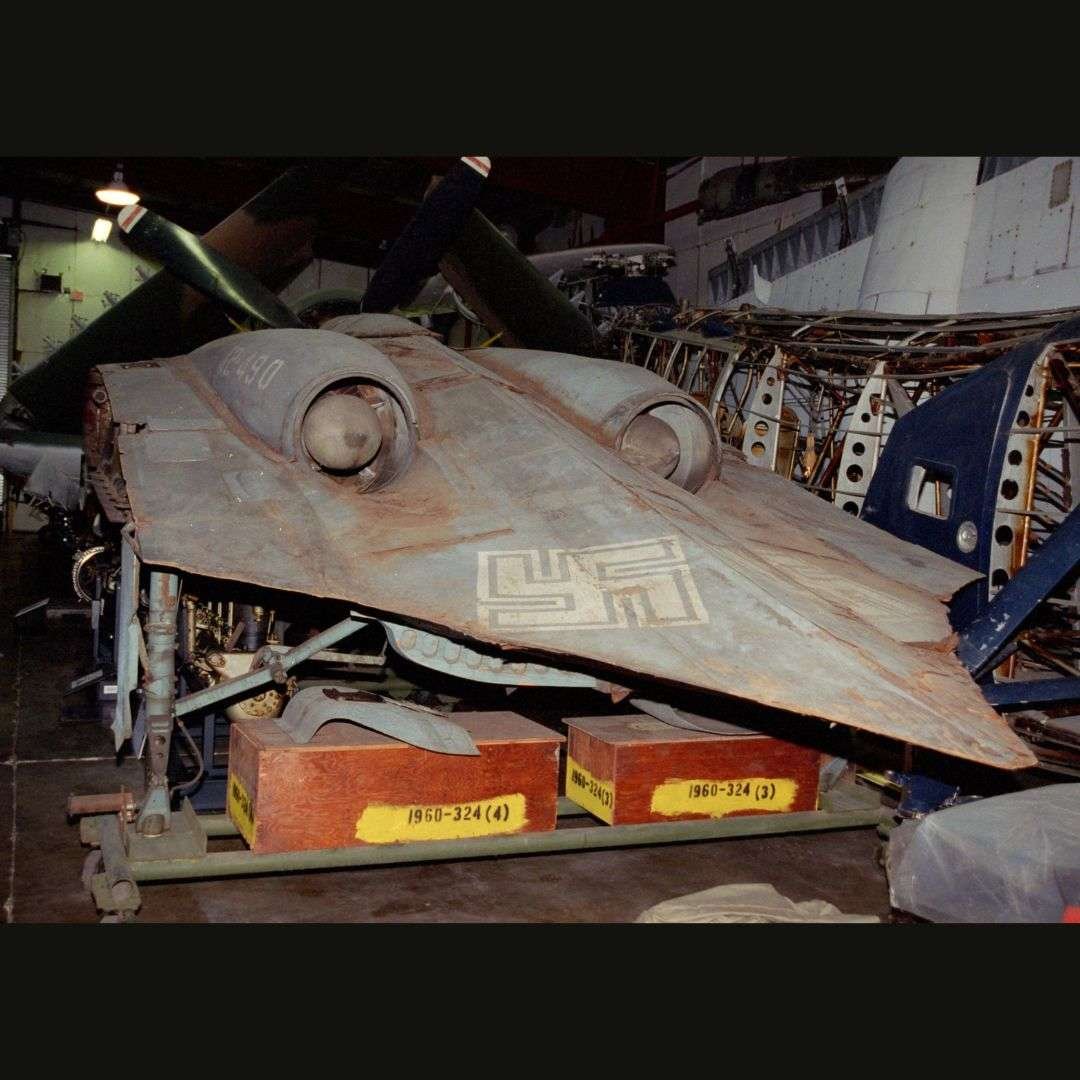
Pictured: Front and rear of the Horten Ho 229 V3 prototype at the Smithsonian's Garber restoration facility (National Air and Space Museum) by Michael.katzmann
Summary: Top ten facts about the Horten Ho 229
1. The Horten Ho 229, also known as the Gotha Go 229, was a German experimental jet-powered aircraft of WWII.
2. Classified as the "Wunderwaffe" (Wonder Weapon) it was intended to help reverse the unfavourable course of the war for Germany.
4. Part of the Luftwaffe competition for the construction of an "America Bomber" to target the USA.
5. It was developed by the Horten brothers, Walter and Reimar, who were not engineers but aviation enthusiasts with bold ideas!
6. The prototype was originally designated Horten H IX.
7. It was equipped with two Junkers Jumo 004B turbojet engines.
8. It had an innovative design with delta-shaped wings and a wooden and composite fuselage which was designed to reduce radar reflection, though later research showed it was not enough to render it undetectable.
9. Some sources claimed it to be the first stealth aircraft in history.
10. The Ho 229 prototype underwent multiple flights but work on the project was interrupted by the end of WWII in 1945.
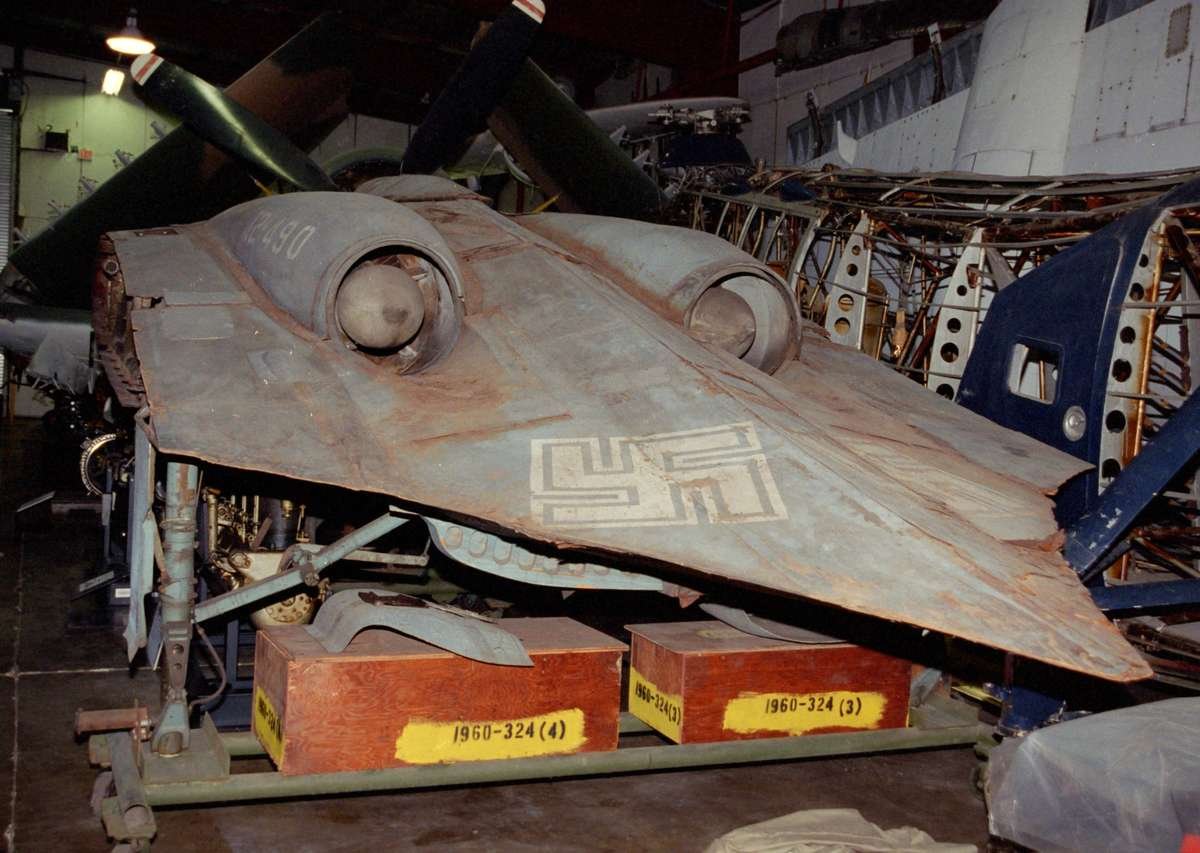
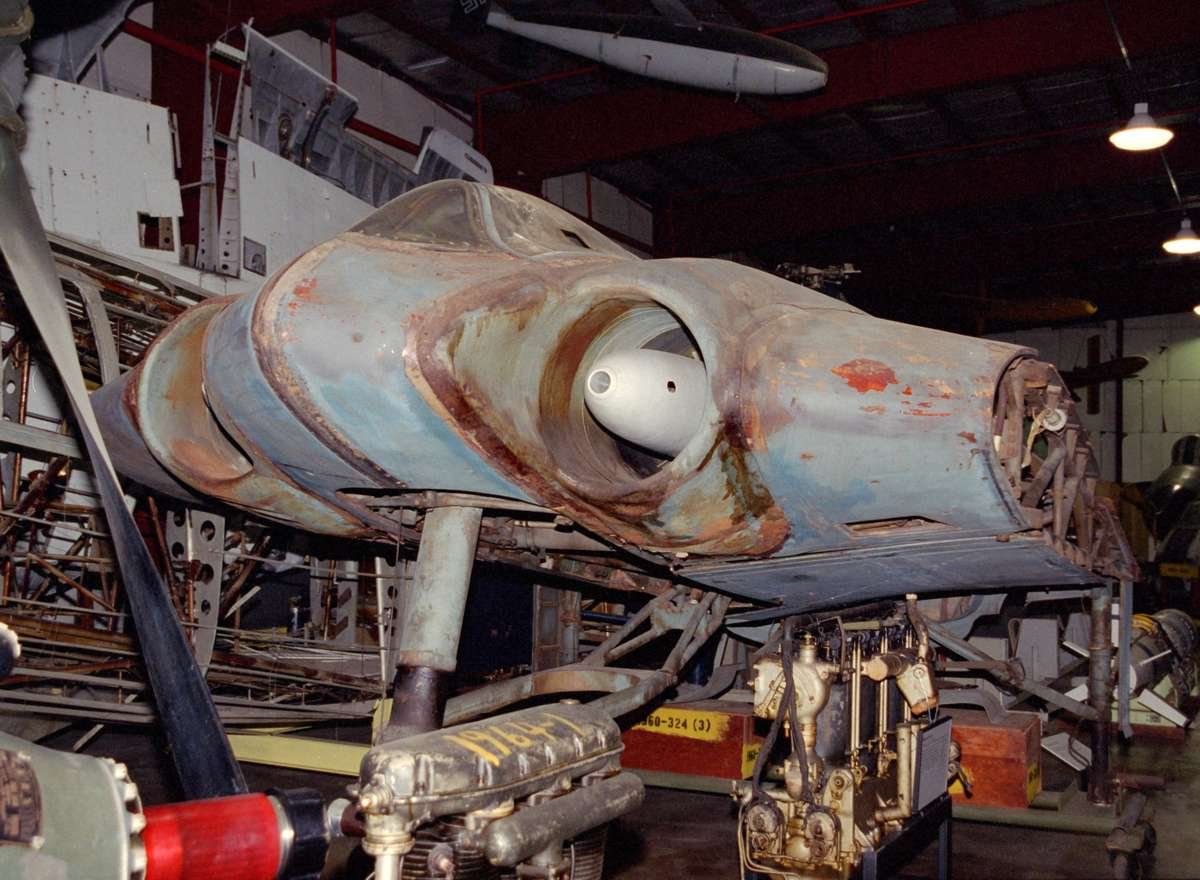
Horten Ho 229 brick plane model- COBI 5757- 953 bricks
The remarkable and innovative WWII aircraft, Horten Ho 229, is now available as a COBI 1:32 scale model. Spanning 52.5cm, it comprises 953 pieces, including new bricks mimicking the plane's distinct nose, pilot's cabin, and engine air intakes. The model boasts a detailed cockpit with a figure of a test pilot in a flight suit, featuring two sets of headgear. It also features retractable landing gear and high-quality prints with aircraft markings. The bottom is crafted with bricks in a new light blue colour and multiple prints with markings. Walter and Reimar Horten's futuristic design, equipped with two Junkers Jumo 004B turbojet engines, made significant strides in aviation. While some consider it the first stealth aircraft, its impact on post-war jet development in Europe and America remains undeniable. The timeless and modern design continues to captivate history, military technology, and aviation enthusiasts.
"A fantastic kit, one of the best looking WWII jets. Got some hard times
with the small beads, but it was a fun build in general!" ~ Gergan V.
"One of the best sets in general. Building it is great fun most of the time, and the finished build is a beauty." ~ Manuel F.
"A fantastic kit, one of the best looking WWII jets. Got some hard times
with the small beads, but it was a fun build in general!" ~ Gergan V.
"One of the best sets in general. Building it is great fun most of the time, and the finished build is a beauty." ~ Manuel F.
Top Tip from Mark C.
If you wish to add a stand (from another COBI model as no stand is included with the Standard version) and you don't want to drill a hole, Mark C. has some advice:
"I took the blue plate just aft of the forward wheel and put in an element scavenged from a spare stand and voila." See image below.
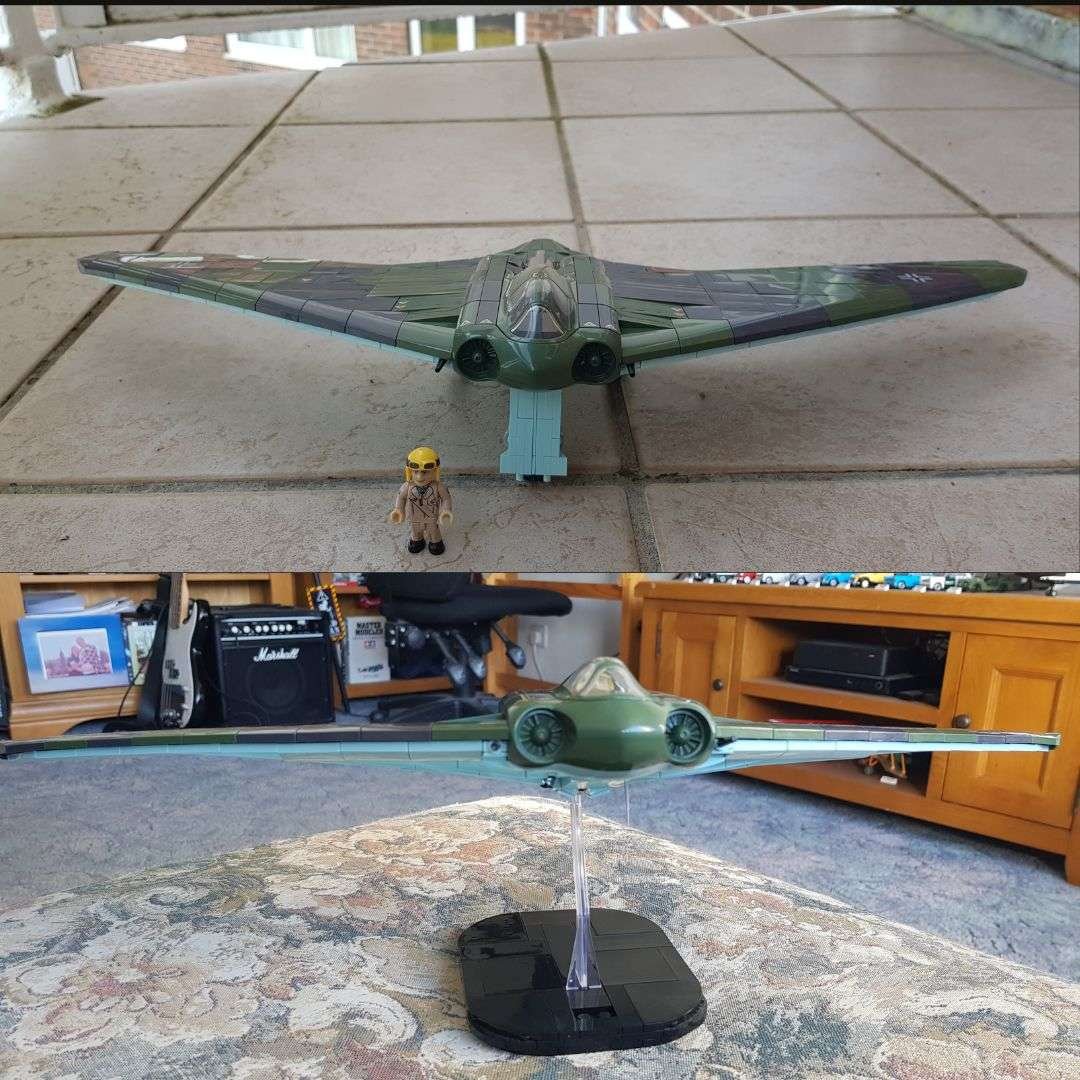
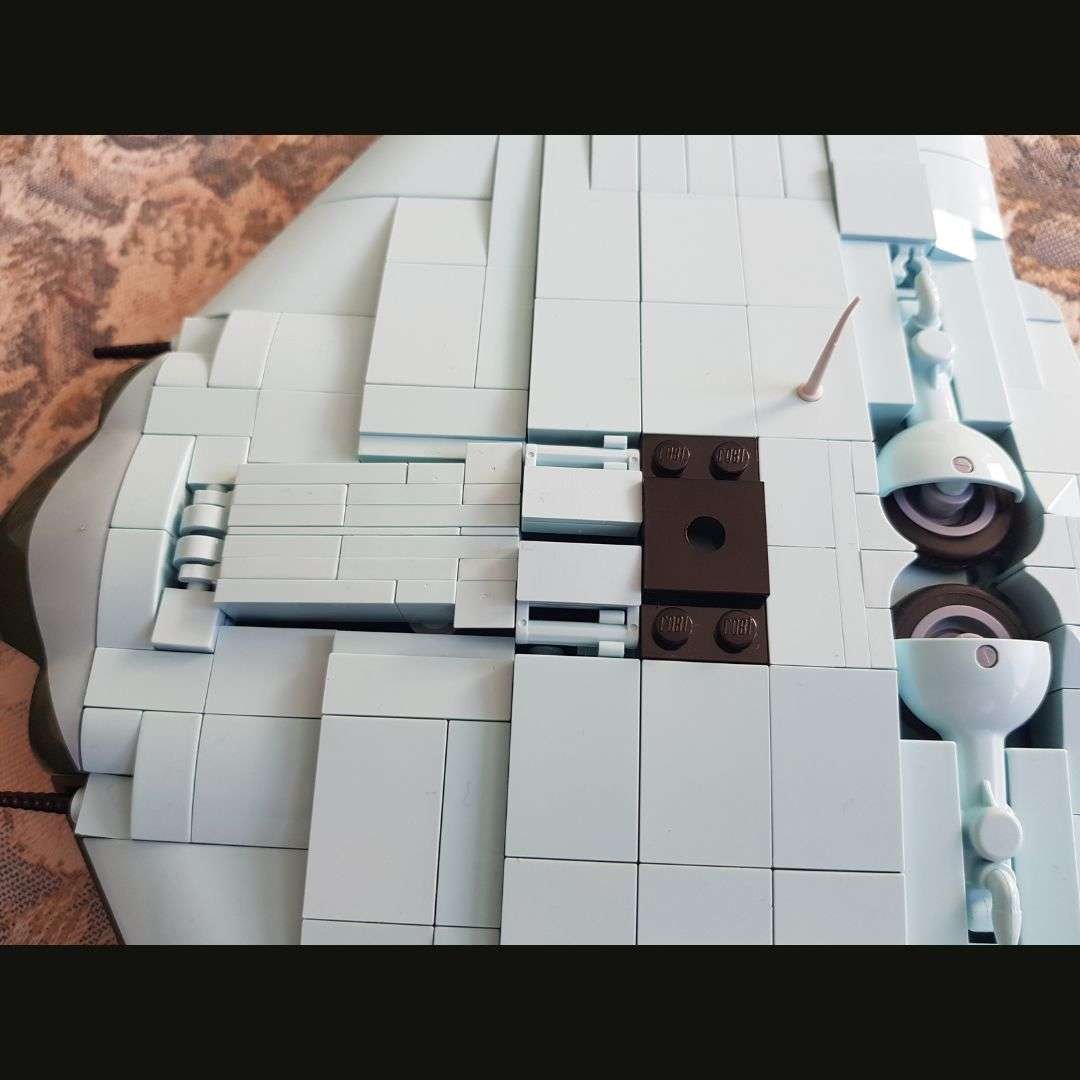
 Skip to content
Skip to content


Ken Newall
looks like a Salamander under the Horten any chance of that or a Komet from COBI?
Mark C
Fascinating write up Zoe, and it is one of Cobi’s best aircraft models.
Caspar R
Thank you Zoe for most interesting blog. I was lucky enough to see the Horton 229 back in 2018 at the Steven F. Udvar-Hazy Center near Dulles Airport, Washington DC, though it was in pieces!
I will send you some photos I took.
I shallake the COBI Horton 229 and take up Mark C’s suggestion about the stand option, of I cannot find space hanging from the ceiling!